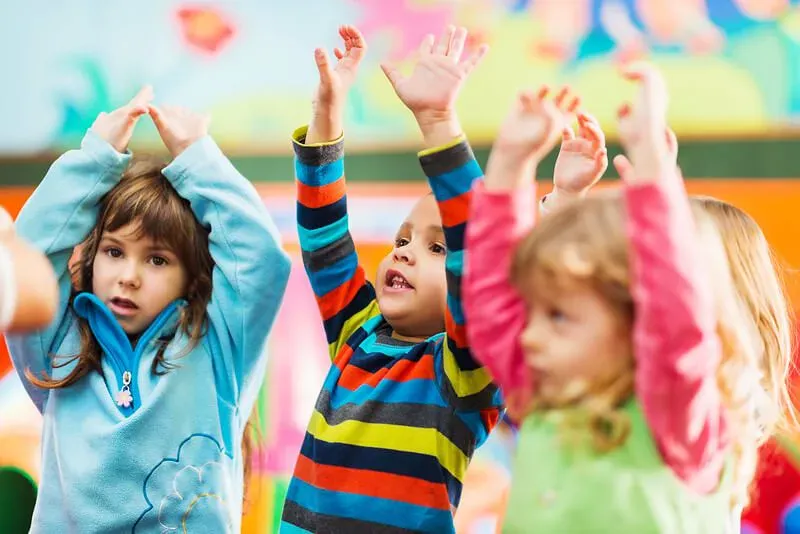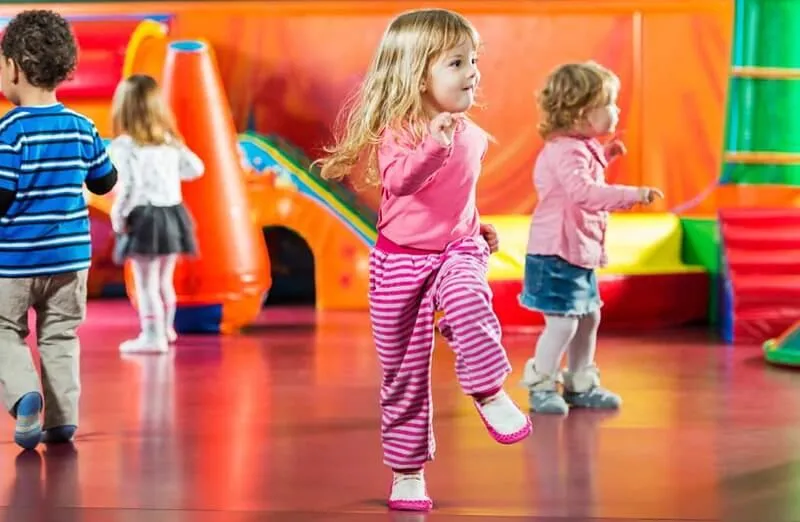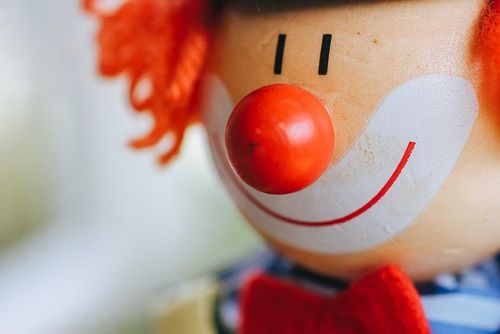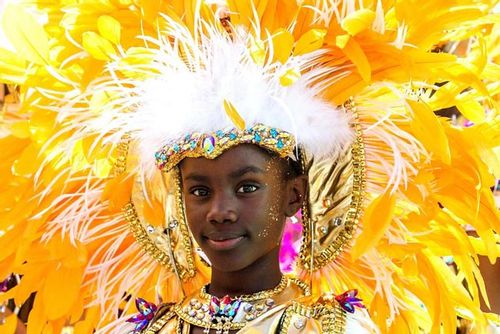FOR ALL AGES
Music and movement activities for toddlers and preschoolers are not only great fun, but they help them to develop so many essential skills.
These ideas for music and movement activities will help their physical development, their creative and listening skills, they are vital for learning language and communication and are instrumental in social and emotional development as well. These activities can help them work off energy and it can encourage quiet children to come of their shell.
These fun music activities can be combined with some fun crafts, such as making a drum or some other simple musical instrument making.
Pop on some music and then tell your preschoolers they can only dance with the body part you shout out. So they might jiggle their right arm or wiggle their tongue!

In this music and movement activity, march around the room, pretending to play a big bass drum. Choose some classical music, such as March of the Toy Soldiers from Tchaikovsky’s Nutcracker Suite, or go for a modern classic such as the theme from The Great Escape.
Put on some suitable music - classical ballet music is good - and get your toddler to move around with a floaty scarf in each hand, waving, wiggling and wrapping themselves in the material.
Take two plastic (unbreakable) plates (or paper plates) and you can bang them together like a pair of cymbals. Movements include banging them above your head, behind your back, and under your legs.
Use a paved area. Turn on the music and your preschooler has to jump into a square and dance and jiggle. Then they have to jump, hop or crawl from square to square.
A bit like Simon Says, but you shout out an animal's name, and the preschoolers have to move like that animal.
It doesn't always have to be preschool music. Have your own little disco at home with some fabulously cheesy songs that have set movements. Choose songs with great music and movements such as YMCA, Oops Upside Your Head, Agadoo, and Cha Cha slide.

Sing the song, touching the correct body parts as you sing it.
Get some huge pieces of paper or old cardboard boxes. Get the preschoolers to lie on the paper or cardboard with a crayon in their hand. Play music as they move their hand around, drawing patterns.
Stick some big pieces of paper to the wall. Arm your toddler with a big paintbrush and some paints and stick on some music. Get them to run around, moving and painting 'how the music makes them feel'.
No one likes being out in this game. So switch it around. Write the children's name on a piece of paper and put it one of the chairs. When the music stops they have to find their name. Great for learning how to recognise their name.
Children can clap hands or use a drum, a wooden spoon on a pan, a chopstick on a tin - whatever you have to hand. Play different short pieces of music and get your young children to clap or tap along to the beat.
Make it safe to practise balance without the risk of falling! Stick some tape to the floor and get your preschooler to 'balance' along it. They can practise the movement of using arms to balance without being in any danger. Make up a story or play some suitable music as they balance.
Use brightly coloured craft feathers. Pop on some music and encourage movement as they keep their feather in the air by blowing it.
Beat a drum or similar. Beat slowly for a walking beat, faster for a jogging beat and faster still for a running beat. Your child has to match the beat to the activity. If you are indoors, get them to the movement on the stop.
Make a homemade shaker or use one you already have. Lead your child in shaking to the beat - holding the shaker above their head, to the side, shaking it in a circle, shaking it behind them, and so on.
A favourite party song for decades, the great thing about the Hokey Cokey is that it also helps children with learning their left and right, and body parts.
The rhythm of this popular story builds musical appreciation and combines it with literacy and movement.
Introduce your little ones to classical music with this fairytale told with music. Tell them the story and then help them identify the different characters played by different instruments - Peter is played by the violin, the bird is the flute, the duck the oboe, the hunters the drums and so on. Get them to do movements like the character when they hear their music and instruments.
This action song has simple movements as it tells the tale of the ducklings that go missing. Introduces simple maths - and don't worry, there's a happy ending!
The children lie 'sleeping' on the floor while you sing the verse. Then you shout 'wake up little bunnies' and they hop up and hop around as you sing the chorus. The movement changes each time, so they have to skip, jump etc.
This preschool music favourite will get preschoolers marching and climbing in time to the song.

Play Bjork's song Oh So Quiet. When she sings quietly, they must tiptoe around the room quietly - once she gets loud, they can run around shouting, but must be ready to go quiet again!
Get some different balls and get the toddlers and preschoolers to experiment how bouncy they are. Then get them to bounce in a different way - like a kangaroo, with big strong bounces and like a rabbit, with more gentle bounces.
When you are out walking, listen for different sounds - birds singing, reversing lorries beeping. Try to imitate the sounds as you are walking.
After your walk, put on some music and let the toddlers and preschoolers dance around, moving like some of the things you have seen - a wiggly worm, a trotting horse, a flying bird, a swaying tree.
Sing the song and do the actions. Just try not to have it going round and round in your head all day!
Read The Disclaimer
At Kidadl we pride ourselves on offering families original ideas to make the most of time spent together at home or out and about, wherever you are in the world. We strive to recommend the very best things that are suggested by our community and are things we would do ourselves - our aim is to be the trusted friend to parents.
We try our very best, but cannot guarantee perfection. We will always aim to give you accurate information at the date of publication - however, information does change, so it’s important you do your own research, double-check and make the decision that is right for your family.
Kidadl provides inspiration to entertain and educate your children. We recognise that not all activities and ideas are appropriate and suitable for all children and families or in all circumstances. Our recommended activities are based on age but these are a guide. We recommend that these ideas are used as inspiration, that ideas are undertaken with appropriate adult supervision, and that each adult uses their own discretion and knowledge of their children to consider the safety and suitability.
Kidadl cannot accept liability for the execution of these ideas, and parental supervision is advised at all times, as safety is paramount. Anyone using the information provided by Kidadl does so at their own risk and we can not accept liability if things go wrong.
Kidadl is independent and to make our service free to you the reader we are supported by advertising.
We hope you love our recommendations for products and services! What we suggest is selected independently by the Kidadl team. If you purchase using the buy now button we may earn a small commission. This does not influence our choices. Please note: prices are correct and items are available at the time the article was published.
Kidadl has a number of affiliate partners that we work with including Amazon. Please note that Kidadl is a participant in the Amazon Services LLC Associates Program, an affiliate advertising program designed to provide a means for sites to earn advertising fees by advertising and linking to amazon.
We also link to other websites, but are not responsible for their content.
Was this article helpful?



Browse Category

We’ll send you tons of inspiration to help you find a hidden gem in your local area or plan a big day out.



Check your inbox for your latest news from us. You have subscribed to:
Remember that you can always manage your preferences or unsubscribe through the link at the foot of each newsletter.